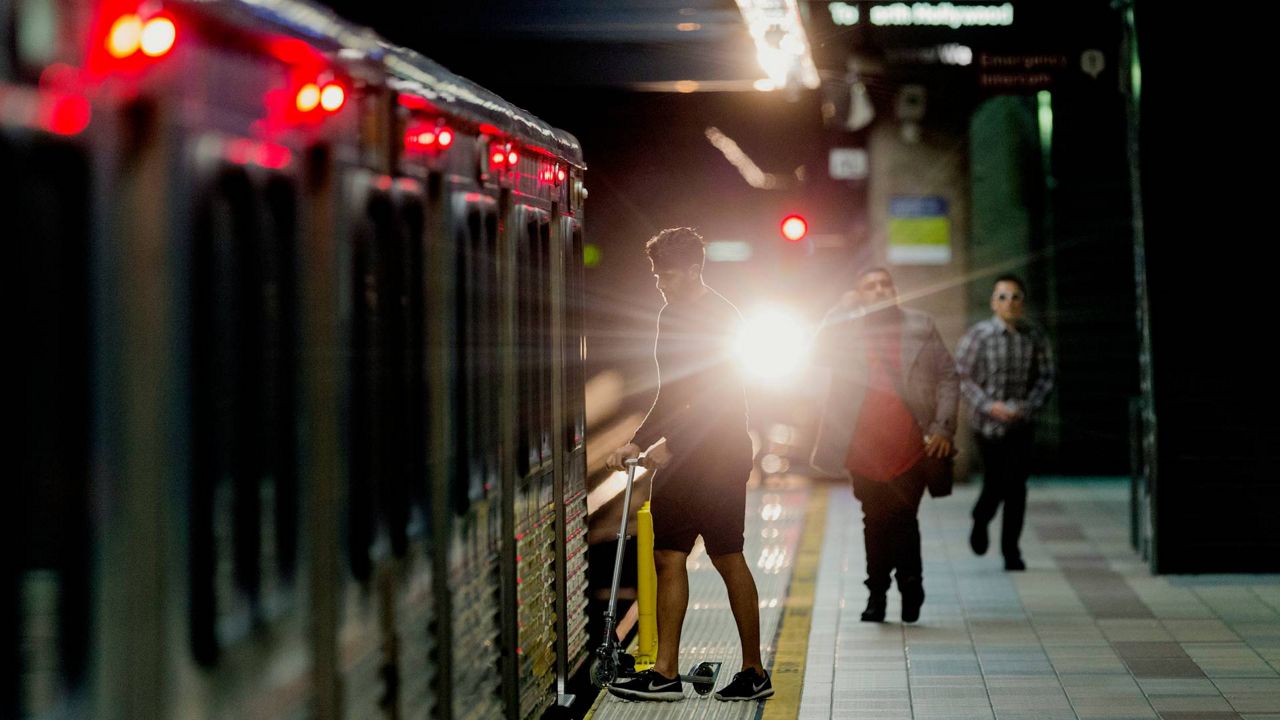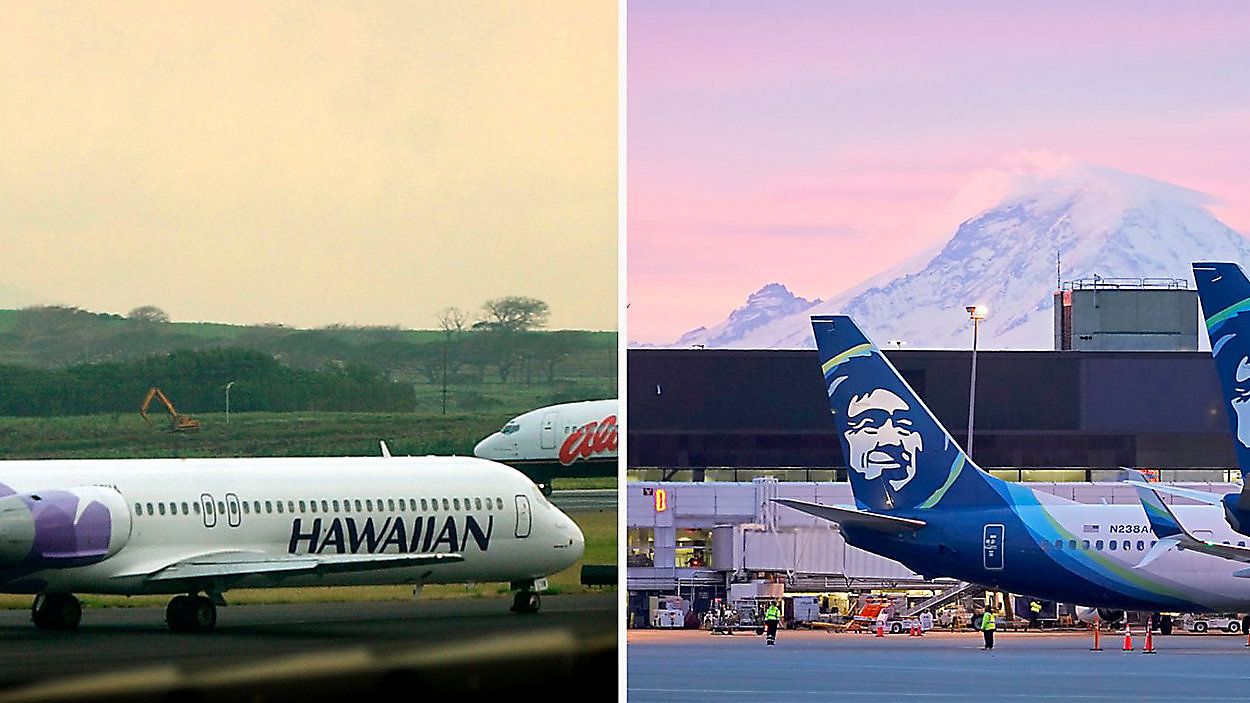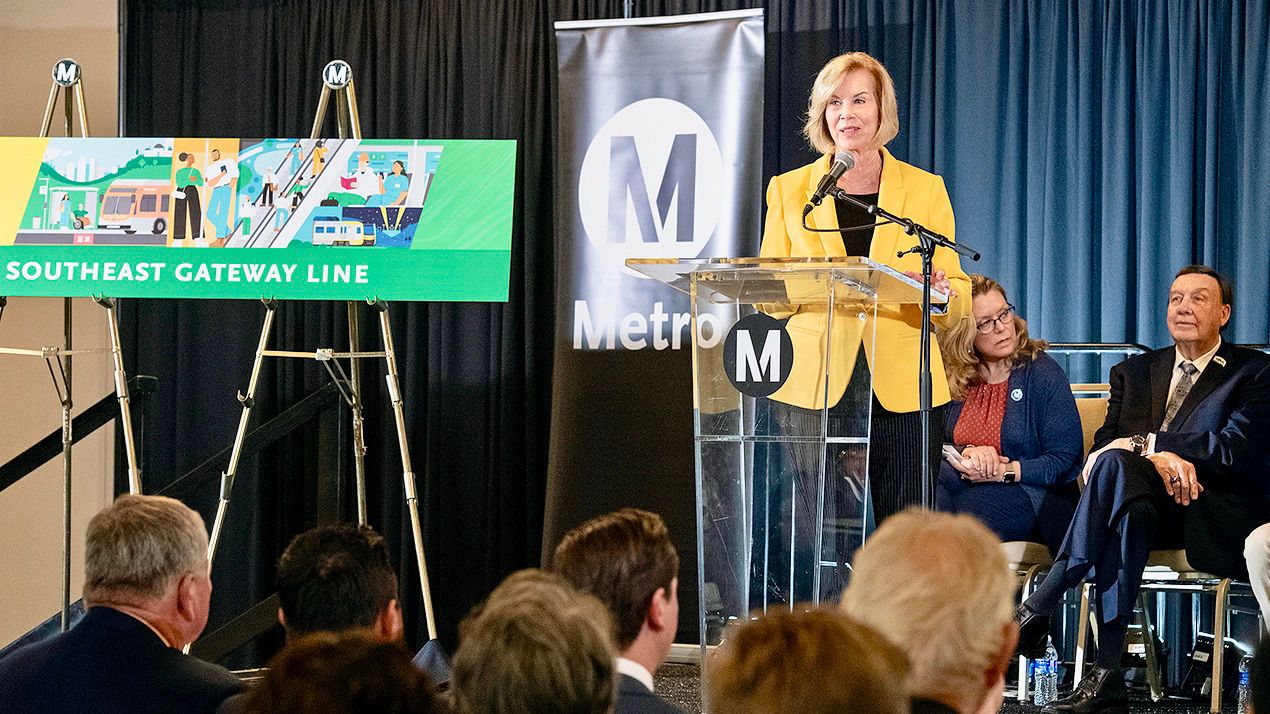LOS ANGELES — A proposed 6.7-mile light rail line along Van Nuys Boulevard received an investment of $893 million from the federal government, bringing the project one step closer to fruition, Metro officials announced Friday.
What You Need To Know
- In a morning news conference outside the Van Nuys Civic Center, an array of elected officials joined Metro leaders to sign a ceremonial check and highlight the light rail project
- The last railway in the East San Fernando Valley rolled down Van Nuys Boulevard in 1952, according to Metro
- Metro CEO Stephanie Wiggins called the project "transformational"
- Sen. Alex Padilla, D-California, and Rep. Tony Cárdenas, D-Pacoima, played a pivotal role in securing federal support, according to Metro officials
In a morning news conference outside the Van Nuys Civic Center, an array of elected officials joined Metro leaders to sign a ceremonial check and highlight the light rail project, which is intended to connect the neighborhoods of Pacoima, Arleta, Panorama City, and Van Nuys with regional bus and rail services such as the agency's G (Orange) and B (Red) lines. The last railway in the East San Fernando Valley rolled down Van Nuys Boulevard in 1952, according to Metro.
The federal grant, a multi-year contract known as a Full Funding Grant Agreement, comes from the Federal Transit Administration's Expedited Project Delivery Pilot Program — aimed at accelerating new fixed guideway capital projects.
Metro CEO Stephanie Wiggins called the project "transformational." She noted that about 35% of households in the area depend on public transportation.
"The East San Fernando Valley Line will give them faster and more efficient service than ever before. Now that this funding is in place, we look forward to breaking ground on this line in the coming months," Wiggins said.
Construction of utility work and minor street improvements along Van Nuys Boulevard is expected to start later this year. The project will include 11 new light rail stations and is currently forecast to open in 2031.
Sen. Alex Padilla, D-California, and Rep. Tony Cárdenas, D-Pacoima, played a pivotal role in securing federal support, according to Metro officials.
"Growing up in Pacoima, bringing rail transit to the east side of the San Fernando Valley has been a priority of mine for decades," Padilla said. "Underserved Angelenos deserve more access to reliable, affordable transit to create opportunities for work and for a better life."
"This nearly $900 million federal investment that Rep. Cárdenas and I pushed for will bring more customers and business to the San Fernando Valley, connect overlooked communities to the rest of Los Angeles County, and uplift hardworking families," he continued.
Cárdenas added the project has been "decades in the marking."
Metro Board of Director Jacquelyn Dupont-Walker said the agency will implement a "Cultural Competency" requirement, taking into consideration the area's diverse cultural heritage and backgrounds.
"This is the first Metro rail project that includes a Cultural Competency Plan outlining a comprehensive engagement strategy, including workforce training and business opportunities to support the diverse communities that reside along this important valley corridor," Dupont-Walker said.
"I'm so pleased that Metro's contractor will be doing its part to ensure all residents, local businesses, community groups, and institutions are informed of and understand what is being built in their neighborhoods and what new opportunities and partnerships the rail line will offer them," she added.
Los Angeles City Council members Paul Krekorian, Imelda Padilla and Monica Rodriguez, who represent districts encompassing north and east San Fernando Valley neighborhoods, hailed the light rail project.
"The San Fernando Valley deserves a major transportation investment like this, and has needed it for decades," Krekorian said. "I'm happy to say it's finally becoming a reality. With its connections to the G and the B Lines in North Hollywood, East San Fernando Valley Light Rail will turbocharge transit usage in the San Fernando Valley and fulfill the dream of safe, efficient, sustainable transportation for everyone who calls the Valley home."
Metro estimates the project will create more than 18,000 direct and indirect jobs. The agency will also look to enact a labor agreement with contractors, which would focus hiring of residents in the East San Fernando Valley.












